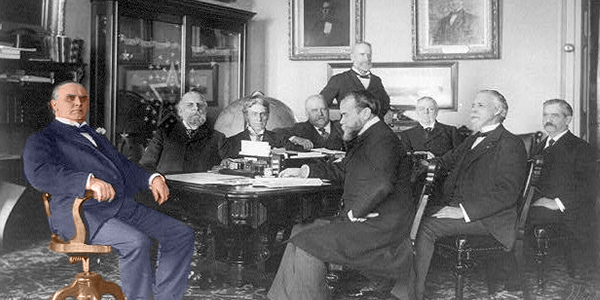
Gold Stocks: What to Expect in the New Year
By Frank Holmes
CEO and Chief Investment Officer
U.S. Global Investors
 |
After three years of pain, can gold stocks break their losing streak and see a gain in 2014?
History says chances are good.
The most recent string of losses in the gold mining industry has been brutal, causing many investors to give up on the sector and sell their holdings. Since the beginning of 2011, the NYSE Arca Gold Miners, the FTSE Gold Mines, and the Philadelphia Gold & Silver Indices all declined more than 60 percent.
But ditching this sector may not be the best action to take this year because miners are approaching the historical limits of multi-year declines.
Take a look at the Philadelphia Gold & Silver Index (XAU) during prior periods of stress. While gold stocks have a history of higher volatility compared to the overall U.S. market, consecutive periods of declines are rare. In 30 years, the XAU never had a losing streak of more than three years.
In fact, there were only two previous times in these three decades in which the XAU saw a trio of losses.
One was back in the early 1990s, when the index fell 19.09 percent, 16.75 percent and 11.75 percent in 1990, 1991 and 1992, respectively.
What’s striking about this period is the incredible rebound that followed. The XAU rallied 85 percent in 1993. U.S. Global Investors’ Gold and Precious Metals Fund (USERX) climbed even more, increasing a whopping 124 percent in 1993. See recent performance of USERX.
Could we see a repeat performance?
Perhaps. A key is watching government policies, as they can be a precursor to change.
Let’s take a look at the other period of weakness. This three-year loss occurred in the late ‘90s, with a muted rebound in 1999. However, at that time, the Bank of England (BOE) was auctioning off a significant amount of its gold reserves when bullion prices were at their lowest in 20 years. From 1999 to 2002, the central bank in England sold off 400 tonnes at a value of about $3.5 billion.
If the BOE had held onto this gold, it’d be worth nearly $15.9 billion today.
Following the period when the BOE sold its gold, the XAU rebounded. While the index gained only about 6 percent in 2001, gold stocks rose 41 percent in 2002 and about 42 percent in 2003.
During this period, gold and gold stocks were again influenced by a change in government policy. In this case, the liberalization of gold purchases was occurring in China, which was positive for gold.
So what about 2014?
What catalysts could turn gold stocks around and end the losing streak? Investors have multiple possible events to choose from that could cause gold and gold companies to rally. In a recent Mineweb article, Lawrie Williams listed several:
- Gold ETF sales have slowed. See our chart that shows how gold ETF redemptions ceased to be the main driver of falling prices.
- The COMEX warehouse is “running out of available physical gold,” which is causing more traders to demand delivery of additional gold, says Lawrie.
- China may continue to build its gold reserves. Lawrie speculates that China could have its first gold conference backed by “a slew of government organisations.”
- India could ease its gold import restrictions. Last week in the Investor Alert, we highlighted the commerce ministry’s request to ease restrictions, which would relieve jewelers hurt by import curbs.
- Unrest in the Middle East likely could persist.
- There may be a “major hiccup” in U.S. growth. Read U.S. Global’s special report, which takes a closer look at how to evaluate unemployment and inflation numbers.
- Newly mined gold supply may be underwhelming.
Lawrie mentions a few downsides as well, which would result in an unprecedented fourth year of declines for gold stocks. For example, as the Federal Reserve cuts back on bond purchases, it could come “without adverse general stock market reaction.” In addition, there may continue to be improvements in the unemployment situation in the U.S. and Europe.
Ralph Aldis, portfolio manager of U.S. Global’s gold funds, the Gold and Precious Metals Fund (USERX) and the World Precious Minerals Fund (UNWPX), believes the best time to buy gold is when the market hates it. He recently talked with The Gold Report about gold, junior explorers and what investors should expect in the new year. When asked his thoughts about gold’s direction in 2014, Ralph remarked:
I think pessimism has reached a maximum, particularly in the gold space. Historically, when pessimistic consensus is this strong and gold stocks are hated this much, these are turning points.
The opportunity is here; don’t get discouraged.

Index Summary
- Major market indices finished lower this week. The Dow Jones Industrial Average fell 0.05 percent. The S&P 500 Stock Index lost 0.54 percent, while the Nasdaq Composite declined 0.59 percent. The Russell 2000 small capitalization index moved lower by 0.43 percent this week.
- The Hang Seng Composite dropped 1.40 percent; Taiwan rose 0.13 percent while the KOSPI fell 2.80 percent. The 10-year Treasury bond yield was unchanged this week at 3.00 percent.
Domestic Equity Market
The S&P 500 Index entered 2014 with a whimper, falling for the week as most sectors were lower. After such a strong year and strong finish to 2013, giving back a little this week was not completely unexpected.
Strengths
- The financial sector was the best performer this week, led by Bank of America which rose by nearly 5 percent on the back of a broker upgrade. Other large banking and capital market related names were also strong, such as Citigroup and Morgan Stanley.
- The consumer discretion sector broke even this week in predictably mixed trading. H&R Block, Urban Outfitters and Wynn Resorts all rose by about 2.5 percent, while other high profile names in the group were lower, such as Priceline and Starbucks.
- Delta Air Lines was the best performer in the S&P 500 this week, rising 8.14 percent. The company reported its December operating and financial performance on Friday, which positively surprised the market.
Weaknesses
- The energy sector was the worst performer this week as oil prices fell 6 percent, the U.S. dollar was stronger, and a fiery oil-related train derailment in North Dakota didn’t help sentiment either.
- The utilities and telecom services sectors were also among the worst performers as interest rate sensitive areas of the market continue to struggle.
- Pioneer Natural Resources was the worst performer in the S&P 500 this week, falling 6.15 percent. Energy names generally were among the worst performers this week.
Opportunities
- The current macro environment remains positive as economic data remains robust enough to give investors confidence in an economic recovery but not too strong as to force the Federal Reserve to aggressively change course in the near term.
- Money flows are likely to find their way into domestic U.S. equities and out of bonds and emerging markets.
- The improving economic situation could possibly drive equity prices well into 2014.
Threats
- A market consolidation could occur in the near term after such strong performance.
- Higher interest rates are a threat for the whole economy. The Fed must walk a fine line and the potential for policy error is large.
- A lot of potentially good news is priced into the market and the economy will need to deliver to maintain the positive momentum in the market.
The Economy and Bond Market
Treasury bond yields were little changed, but did have a lower base this week. It was another holiday shortened week with bad weather in many parts of the country, so we should see more activity next week with market participants back at full strength. Next week will also see the Fed minutes from the December Federal Open Markets Committee (FOMC) meeting, along with nonfarm payrolls and the unemployment report.
Strengths
- The ISM Manufacturing Index experienced a modest decline in December, but the overall level remains very strong and bodes well for economic activity as we move into 2014.
- The new orders component of the ISM Manufacturing Index hit the highest level since April 2010, which is an excellent leading indicator.
- Home prices continue to rise as the S&P/Case-Shiller Index was 13.6 percent higher than a year ago in October. Along with the stock market, rising home prices have been a key driver of consumer net worth.
Weaknesses
- Mortgage rates hit the highest level since September, rising to 4.53 percent.
- Treasury yields remain elevated, with the 10-year treasury hovering around 3 percent.
- China’s banking system is getting more scrutiny as outstanding Chinese municipal debt rose 13 percent in the six months ending in June.
Opportunities
- Despite recent conflicting commentary, the Fed continues to remain committed to an overall accommodative policy and is unlikely to raise interest rates in 2014.
- Key global central bankers remain in easing mode such as the European Central Bank, Bank of England and the Bank of Japan.
- There are many moving parts to the taper decision and while the Fed began the process, it is very possible that tapering could be delayed if economic data slows.
Threats
- Inflation in some corners of the globe is getting the attention of policy makers and may be an early indicator for the rest of the world.
- Trade and/or currency “wars” cannot be ruled out which may cause unintended consequences and volatility in the financial markets.
- The recent bond market sell off may be a “shot across the bow” as the markets reassess the changing macro dynamics.
World Precious Minerals Fund – UNWPX • Gold and Precious Metals Fund – USERX
Gold Market
For the week, spot gold closed at $1,236.90, up $23.55 per ounce, or 1.94 percent. Gold stocks, as measured by the NYSE Arca Gold Miners Index, climbed 3.17 percent. The U.S. Trade-Weighted Dollar Index gained 0.58 percent for the week.
Strengths
- Domestic and international demand has been strong for both gold and silver. The U.S. Mint started 2014 with strong sales of gold coins, extending last year’s sales strength and representing a 14 percent increase year-over-year. On January 2, there were 37,500 ounces of gold coins sold, which is equal to 25 percent of all sales during January 2013. Gold sales from Australia climbed 41 percent last year with gold coins and minted bars climbing to 754,635 ounces in 2013, up from 533,000 ounces a year earlier. Turkey’s gold imports increased 64 percent in December to 31.6 tonnes. Russian lenders purchased 181.4 tonnes of Russian-produced gold in 2013, representing an 8.3 percent increase year-over-year and 90 percent of the country’s production.
- The sale of silver coins in the U.S. rose to a record of 42.675 million ounces in 2013 from 33.743 million ounces in 2012. Australia’s silver coins sales surged by 33 percent in 2013. In Turkey, imports of silver rose to 41.6 metric tonnes last month, 36 percent more than in November. For the full year, Turkey imported 227.8 tonnes of silver, 60 percent more than in 2012.
- Despite net Chinese gold imports through Hong Kong falling below the 100-ton level in November, Chinese net gold imports remain on track to reach well over 1,100 tonnes in 2013. That is almost double the amount imported in 2012. According to figures by the Shanghai Gold Exchange, total gold imports through Hong Kong and throughout other routes may be in excess of 2,000 tonnes.
Weaknesses
- Koza Gold reported that the local government has ordered a suspension of all production activities at its Cukuralan mine, citing a lack of proper environmental permits. The company announced that it has filed all the required papers with the government and expects operations to resume shortly. Koza shares declined 17.78 percent since the news was released.
- Colossus Minerals held discussions with a group of holders of convertible gold-linked notes in relation to the anticipated failure to pay interest on the notes, and the consequential default under the notes that would result from the company’s inability to rectify such failure before January 10. Colossus is in the process of laying off approximately 400 workers at the Serra Pelada Project and placed the project on a care and maintenance status. In addition, it is reducing the number of employees at the Toronto office.
- The Macquarie Gold Team noted that cost-cutting will still be the focus for the gold producers in the recent fourth-quarter preview of earnings. Macquarie also suggests that investors avoid companies that could see heightened survival risk at lower gold prices, such as Allied Nevada, Elgin Mining, and Lachlan Star.
Opportunities
- We believe it is significant that in September of this year China will hold its first state-supported gold conference in Beijing. The China Gold Conference and Exposition is being organized by the China Gold Association with support from the World Gold Council, the Shanghai Gold Exchange, and the Shanghai Futures Exchange. This could be a timely opportunity and a nice venue for China to make new announcements about Chinese gold reserves and/or policy. A substantial increase in China gold reserves could have a dramatic effect on the gold price.
- Steven Shepherd and Allan Cooke of JP Morgan see substantial value in South Africa and they expect Harmony Gold to deliver handsome rewards for investors in 2014. The rand has been hit hard in 2013, and South African gold miners have a dollar revenue stream and largely rand-based costs, so despite the weak dollar price of gold, its value denominated in rand remains at a robust level for all but the most marginal mines. South African stocks are oversold and they appear to present a significant opportunity for buyers.
- Shepherd and Cooke further note that the structural issues that led to the 12-year rise in gold prices remain firmly in place. Unprecedented monetary policy in most of the world’s leading economies surely must impact the intrinsic value of fiat currencies leading to debasement and inflation, unless “the laws of gravity” are to be defied. They strongly believe that gold may be close to a cycle bottom now.
Threats
- Chile’s lower house members have submitted a draft bill aimed to make the use of desalinated water in mining processes mandatory, an effort to deal with the decreasing supply of water. The problem is that the cost of desalination in the country has escalated in recent years to the point that it is now twice as expensive as in the Unites States. This brought the mining industry’s energy operating costs in Chile as high as 14 percent of total production costs. The mining industry, which uses significant quantities of water, is one of the main pillars of the Chilean economy, with copper exports accounting for one-third of government revenue.
- Hedging of gold production has been back in the headlines, such as Barrick Gold’s board saying it would be discussed. Some speculate that the motive behind the bullion banks’ push to require hedging more stridently in the future is due to COMEX warehouse stocks of physical gold running at very low levels. Hence, the bullion banks, which may be short gold, need to replenish their supplies to return the leased gold to the central banks. Perhaps this is why Germany is finding it so difficult to repatriate its gold stored in the U.S. and U.K. bank vaults. Unfortunately for the miners, hedging gold at around $1,200 could mean producing at a loss.
- A study suggests that Obamacare costs may be higher than expected, with emergency rooms being a preferred choice for care among 3.9 million people newly enrolled in the U.S. medical program for the poor. The concern is being raised by an economist who said a state Medicaid expansion in Oregon five years ago led newly insured patients to visit emergency rooms 40 percent more often than the uninsured. Additionally, 53 percent of ER visits were for problems that either could have been treated outside a hospital ER, or weren’t emergencies. That finding is opposite to the government’s assumption that the newly insured would choose lower-cost options for care, such as doctor’s offices. James Smith, economist of the Rand Corp., who reviewed the report, noted this was the gold standard in research quality and it clearly shows such an expansion increases emergency department use and increases the costs. This could lead to stronger inflationary pressures, particularly since the new law did nothing to incentivize an increase in the supply of doctors.
Energy and Natural Resources Market
Strengths
- Global oil demand is projected to reach new record highs in 2013 at 91.2 million barrels per day (91.2mb/d). Notably, this is 5.0mb/d higher than before the financial crisis in 2008.
- According to the statistics of China’s National Development and Reform Committee (NDRC), China’s crude steel production from January to November reached 712.86 million metric tonnes, up 7.8 percent year-over-year. Despite weaker pricing, the steel sector’s profit from January to October reached Rmb 157 billion, up 39.9 percent from the prior year.
- According to Macquarie Research, the final Manufacturing purchasing managers’ index numbers (PMIs) of 2013, released this week, suggest all key manufacturing regions continued to expand in December, but the momentum remains more with the developed economies than with emerging markets.
Weaknesses
- The price of WTI crude oil fell 6 percent this week to $94 a barrel, the biggest weekly drop since June of 2012 following a disappointing weekly inventory report.
- Despite cold temperatures across much of the northeast United States, the price of natural gas fell 2 percent this week.
- The Pipeline and Hazardous Materials Safety Administration (PHMSA) is issuing a safety alert to notify the general public, emergency responders, and shippers and carriers, that recent derailments and resulting fires indicate that the type of crude oil being transported from the Bakken region may be more flammable than traditional heavy crude oil.
Opportunities
- China will impose tiered power pricing on all aluminium smelters starting in January to help eliminate inefficient plants and tackle severe overcapacity in the sector, according to the NDRC. Power prices will remain unchanged for smelters that use less than 13,700 kilowatt per tonne (13,700 kW/t) of aluminium produced, while those that use between 13,700 and 13,800 kW/t will be charged an additional RMB 0.02/kW. Smelters that consume more than 13,800 kW/t will be charged an additional RMB 0.08/kW.
- The China Iron and Steel Association said total crude steel output in China is likely to increase to 800 million metric tonnes in 2014, implying growth of 2 to 3 percent from last year.
- Construction directly associated with the 2020 Summer Olympic Games in Tokyo will generate an estimated 2 to 3 million metric tonnes of new steel demand after the 2016 fiscal year, the Japan Iron & Steel Federation (JISF) has calculated.
Threat
- Following a number of railway explosions in the Bakken oil field of North Dakota, the region’s energy production, as well as the local economy could be dampened as new safety rules are proposed and implemented.
December 31, 2013Interactive Recap: Our Favorites from 2013 |
December 31, 20132013: Looking Back at the Year of the Bull |
December 26, 2013The Top Gold Stories in 2013 |
China Region Fund – USCOX • Emerging Europe Fund – EUROX
Emerging Markets
Strengths
- Macau, the biggest casino hub in the world and the only in China, raked in $45 billion in gambling revenue in 2013, which is 18.6 percent more than in 2012, continuing to blaze ahead of rival gaming destinations. Earning seven times more than Las Vegas, Macau has seen revenue soar thanks to its proximity to vast numbers of increasingly wealthy Chinese. Macau was up 18.5 percent in December versus the consensus of 13.6 percent. Throughout the rest of the year, Macau was up 21.3 percent in November, 31.7 percent in October, 21.4 percent in September, 17.6 percent in August, 20.0 percent in July, 21.1 percent in June, 13.5 percent in May, and 13.1 percent in April.
- Within the $2 trillion global information technology (IT) market, China is expected to narrow the gap with industry leaders even further as the global economy is expected to expand rapidly this year. Total government and business spending in IT on the mainland is estimated to reach $124.5 billion, up 10.5 percent from last year, according to a new industry forecast published yesterday by Forrester Research.
- The HSBC China purchasing managers’ index (PMI) for December came in unchanged from the flash reading at 50.5, and on forecast. For key Australian commodities like iron ore, China is the top export destination. According to Hongbin Qu, Chief Economist, China & Co-Head of Asian Economic Research at HSBC, “the final PMI sustained the fifth, above-50 reading in a row thanks to a steady increase of new orders.”
Weaknesses
- Emerging market (EM) economic growth is almost universally weak relative to the trend, and Credit Suisse economists say that all major EM regions’ economies are running negative output gaps that will not close until 2015. At the individual country level, they estimate that only the economies of Malaysia and the Philippines are currently above potential, and that only Chile, Hungary and Turkey will swing into positive output gaps in 2014.
- China’s non-manufacturing purchasing managers’ index (PMI) fell to 54.6, which is the lowest since August. According to Businessweek, the official gauge for factory output dropped more than economists had projected, according to data on January 1, bringing it to a four-month low.
- Russia’s current account slid to the narrowest surplus since 1998 to $629 million from $1.1 billion reported in October. The median estimate projected a surplus of $8 billion before the first reading in October.
- Russian inflation held above the central bank’s target for a sixteenth-straight month in December, underscoring the bank’s reluctance to stimulate the economy by reducing borrowing costs. A freeze on fee charges by state monopolies such as Gazprom next year is a preferred way for the government to slow inflation.
Opportunities
- After the recent IPO of 500.com, many investors have become interested in China’s lottery market. China’s lottery sales totaled Rmb 279 billion at the end of November 2013, which is up Rmb 44.3 billion or 18.9 percent year-over-year. The CITIC Group expects total sales to exceed 300 billion for 2013, with a compound annual growth rate (CAGR) of 22.8 percent over the next three years, in which paperless lottery sales are forecast to grow at CAGR of 67 percent, to more than Rmb 100 billion in 2015.
- Following a year-end jump, a plunge in eurozone money market rates at the beginning of 2014, has eased pressure on the European Central Bank (ECB) for now to relax its monetary policy still further. However, the upward trend could resume in the next few months.
- GULP, or Growth at an Unlimited Price, was the style that worked in 2013 in emerging markets, says a JP Morgan strategist. This was due to weaker economic growth driving emerging market investors into growth stocks. The EM growth index is at a 50 percent price-to-earnings, premium to value, and the highest since 2007. Rising bond yields are typically a trigger for value to perform, and value outperformed growth in the past month.
Threats
- China’s bank loans to local governments dropped from 16.6 percent in 2012 to 13.9 percent in June 2013 as a percentage of the total-loan mix. Additionally, the bank audit process is becoming much more comprehensive.
- On Thursday, the baht currency and Thai stocks tumbled, according to Reuters. This came as uncertainty deepened about elections in February that anti-government forces are determined to block in their bid to oust Prime Minister Yingluck Shinawatra. Reaching a four-month low, the benchmark index dropped 2.7 percent to 1,263.72 before the midday break, and the baht lost for a tenth-straight day against the dollar. Investors are worried a February 2 poll will not go ahead, leaving Yingluck’s government exposed to prolonged attacks by opponents.
- The ruling Fidesz party will discuss phasing out foreign-exchange (FX) loans at a parliamentary group meeting in January. This is after the Hungarian Supreme Court’s “beyond doubt” decision that existing FX loans must be kept valid.
Leaders and Laggards
The tables show the weekly, monthly and quarterly performance statistics of major equity and commodity market benchmarks of our family of funds.
| Index | Close | Weekly Change($) |
Weekly Change(%) |
|---|---|---|---|
| 10-Yr Treasury Bond | 3.00 | -0.00 | -0.10% |
| Natural Gas Futures | 4.32 | -0.09 | -1.93% |
| Oil Futures | 94.14 | -6.18 | -6.16% |
| Gold Futures | 1,236.40 | +22.40 | +1.85% |
| XAU | 86.63 | +2.34 | +2.78% |
| S&P/TSX Canadian Gold Index | 161.62 | +3.77 | +2.39% |
| Korean KOSPI Index | 1,946.14 | -56.14 | -2.80% |
| Hang Seng Composite Index | 3,201.64 | -45.60 | -1.40% |
| Russell 2000 | 1,156.09 | -5.00 | -0.43% |
| Nasdaq | 4,131.91 | -24.69 | -0.59% |
| S&P Basic Materials | 289.03 | -1.76 | -0.61% |
| S&P Energy | 641.53 | -9.44 | -1.45% |
| S&P 500 | 1,831.37 | -10.03 | -0.54% |
| DJIA | 16,469.99 | -8.42 | -0.05% |
| Index | Close | Monthly Change($) |
Monthly Change(%) |
|---|---|---|---|
| 10-Yr Treasury Bond | 3.00 | +0.22 | +7.73% |
| Natural Gas Futures | 4.32 | +0.35 | +8.70% |
| Oil Futures | 94.14 | -1.90 | -1.98% |
| Gold Futures | 1,236.40 | +15.60 | +1.28% |
| XAU | 86.63 | +5.75 | +7.11% |
| S&P/TSX Canadian Gold Index | 161.62 | +10.10 | +6.67% |
| Korean KOSPI Index | 1,946.14 | -63.22 | -3.15% |
| Hang Seng Composite Index | 3,201.64 | -332.01 | -14.83% |
| Russell 2000 | 1,156.09 | +32.31 | +2.88% |
| Nasdaq | 4,131.91 | +94.71 | +2.35% |
| S&P Basic Materials | 289.03 | +14.12 | +5.14% |
| S&P Energy | 641.53 | +6.48 | +1.02% |
| S&P 500 | 1,831.37 | +36.22 | +2.02% |
| DJIA | 16,469.99 | +555.37 | +3.49% |
| Index | Close | Quarterly Change($) |
Quarterly Change(%) |
|---|---|---|---|
| 10-Yr Treasury Bond | 3.00 | +0.35 | +13.30% |
| Natural Gas Futures | 4.32 | +0.82 | +23.27% |
| Oil Futures | 94.14 | -9.70 | -9.34% |
| Gold Futures | 1,236.40 | -74.20 | -5.66% |
| XAU | 86.63 | -3.73 | -4.13% |
| S&P/TSX Canadian Gold Index | 161.62 | -7.55 | -4.46% |
| Korean KOSPI Index | 1,946.14 | -50.84 | -2.55% |
| Hang Seng Composite Index | 3,201.64 | +8.35 | +0.26% |
| Russell 2000 | 1,156.09 | +77.84 | +7.22% |
| Nasdaq | 4,131.91 | +324.15 | +8.51% |
| S&P Basic Materials | 289.03 | +20.74 | +7.73% |
| S&P Energy | 641.53 | +31.77 | +5.21% |
| S&P 500 | 1,831.37 | +140.87 | +8.33% |
| DJIA | 16,469.99 | +1,397.41 | +9.27% |
Please consider carefully a fund’s investment objectives, risks, charges and expenses. For this and other important information, obtain a fund prospectus by visiting www.usfunds.com or by calling 1-800-US-FUNDS (1-800-873-8637). Read it carefully before investing. Distributed by U.S. Global Brokerage, Inc.
All opinions expressed and data provided are subject to change without notice. Some of these opinions may not be appropriate to every investor.
Foreign and emerging market investing involves special risks such as currency fluctuation and less public disclosure, as well as economic and political risk. By investing in a specific geographic region, a regional fund’s returns and share price may be more volatile than those of a less concentrated portfolio.
The Emerging Europe Fund invests more than 25 percent of its investments in companies principally engaged in the oil & gas or banking industries. The risk of concentrating investments in this group of industries will make the fund more susceptible to risk in these industries than funds which do not concentrate their investments in an industry and may make the fund’s performance more volatile.
Because the Global Resources Fund concentrates its investments in a specific industry, the fund may be subject to greater risks and fluctuations than a portfolio representing a broader range of industries.
Gold, precious metals, and precious minerals funds may be susceptible to adverse economic, political or regulatory developments due to concentrating in a single theme. The prices of gold, precious metals, and precious minerals are subject to substantial price fluctuations over short periods of time and may be affected by unpredicted international monetary and political policies. We suggest investing no more than 5 percent to 10 percent of your portfolio in these sectors.
Bond funds are subject to interest-rate risk; their value declines as interest rates rise. Tax-exempt income is federal income tax free. A portion of this income may be subject to state and local income taxes, and if applicable, may subject certain investors to the Alternative Minimum Tax as well. The Near-Term Tax Free Fund may invest up to 20% of its assets in securities that pay taxable interest. Income or fund distributions attributable to capital gains are usually subject to both state and federal income taxes. The Near-Term Tax Free Fund may be exposed to risks related to a concentration of investments in a particular state or geographic area. These investments present risks resulting from changes in economic conditions of the region or issuer.
Investing in real estate securities involves risks including the potential loss of principal resulting from changes in property value, interest rates, taxes and changes in regulatory requirements.
Past performance does not guarantee future results.
Some link(s) above may be directed to a third-party website(s). U.S. Global Investors does not endorse all information supplied by this/these website(s) and is not responsible for its/their content.
Holdings as a percentage of net assets as of 9/30/13:
Bank of America Corp.: All American Equity Fund, 3.01%; Holmes Macro Trends Fund, 2.67%; MegaTrends Fund, 1.91%
Citigroup, Inc.: 0.0%
Morgan Stanley: MegaTrends Fund, 1.76%
H&R Block, Inc.: All American Equity Fund, 0.92%
Urban Outfitters, Inc.: 0.0%
Wynn Resorts Ltd: All American Equity Fund, 1.38%
Priceline.com, Inc.: All American Equity Fund, 2.45%; Holmes Macro Trends Fund, 2.61%
Starbucks Corp.: All American Equity Fund, 2.79%; Holmes Macro Trends Fund, 2.98%
Delta Air Lines, Inc.: 0.0%
Pioneer Natural Resources Co.: Global Resources Fund, 2.36%
Koza Altin Isletmeleri AS: Emerging Europe Fund, 1.64%; Gold and Precious Metals Fund, 1.16%; World Precious Minerals Fund, 0.28%
Colossus Minerals, Inc.: 0.0%
Allied Nevada Gold Corp.: 0.0%
Elgin Mining: 0.0%
Lachlan Star Ltd: 0.0%
Harmony Gold Mining Co. Ltd: Gold and Precious Metals Fund, 1.09%; World Precious Minerals Fund, 0.98%
Barrick Gold Corp.: Gold and Precious Metals Fund, 4.25%; World Precious Minerals Fund, 0.47%
Gazprom: Emerging Europe Fund, 4.05%
500.com Ltd: 0.0%
*The above-mentioned indices are not total returns. These returns reflect simple appreciation only and do not reflect dividend reinvestment.
The Dow Jones Industrial Average is a price-weighted average of 30 blue chip stocks that are generally leaders in their industry.
The S&P 500 Stock Index is a widely recognized capitalization-weighted index of 500 common stock prices in U.S. companies.
The Nasdaq Composite Index is a capitalization-weighted index of all Nasdaq National Market and SmallCap stocks.
The S&P BARRA Growth Index is a capitalization-weighted index of all stocks in the S&P 500 that have high price-to-book ratios.
The S&P BARRA Value Index is a capitalization-weighted index of all stocks in the S&P 500 that have low price-to-book ratios.
The Russell 2000 Index® is a U.S. equity index measuring the performance of the 2,000 smallest companies in the Russell 3000®, a widely recognized small-cap index.
The Hang Seng Composite Index is a market capitalization-weighted index that comprises the top 200 companies listed on Stock Exchange of Hong Kong, based on average market cap for the 12 months.
The Taiwan Stock Exchange Index is a capitalization-weighted index of all listed common shares traded on the Taiwan Stock Exchange.
The Korea Stock Price Index is a capitalization-weighted index of all common shares and preferred shares on the Korean Stock Exchanges.
The Philadelphia Stock Exchange Gold and Silver Index (XAU) is a capitalization-weighted index that includes the leading companies involved in the mining of gold and silver.
The U.S. Trade Weighted Dollar Index provides a general indication of the international value of the U.S. dollar.
The MSCI Russia Index is a free-float weighted equity index developed in 1994 to track major equities traded in the Russian market.
The S&P/TSX Canadian Gold Capped Sector Index is a modified capitalization-weighted index, whose equity weights are capped 25 percent and index constituents are derived from a subset stock pool of S&P/TSX Composite Index stocks.
The S&P 500 Energy Index is a capitalization-weighted index that tracks the companies in the energy sector as a subset of the S&P 500.
The S&P 500 Materials Index is a capitalization-weighted index that tracks the companies in the material sector as a subset of the S&P 500.
The S&P 500 Financials Index is a capitalization-weighted index. The index was developed with a base level of 10 for the 1941-43 base period.
The S&P 500 Industrials Index is a Materials Index is a capitalization-weighted index that tracks the companies in the industrial sector as a subset of the S&P 500.
The S&P 500 Consumer Discretionary Index is a capitalization-weighted index that tracks the companies in the consumer discretionary sector as a subset of the S&P 500.
The S&P 500 Information Technology Index is a capitalization-weighted index that tracks the companies in the information technology sector as a subset of the S&P 500.
The S&P 500 Consumer Staples Index is a Materials Index is a capitalization-weighted index that tracks the companies in the consumer staples sector as a subset of the S&P 500.
The S&P 500 Utilities Index is a capitalization-weighted index that tracks the companies in the utilities sector as a subset of the S&P 500.
The S&P 500 Healthcare Index is a capitalization-weighted index that tracks the companies in the healthcare sector as a subset of the S&P 500.
The S&P 500 Telecom Index is a Materials Index is a capitalization-weighted index that tracks the companies in the telecom sector as a subset of the S&P 500.
The NYSE Arca Gold Miners Index is a modified market capitalization weighted index comprised of publicly traded companies involved primarily in the mining for gold and silver. The index benchmark value was 500.0 at the close of trading on December 20, 2002.
The FTSE Gold Mines Index Series encompasses all gold mining companies that have a sustainable and attributable gold production of at least 300,000 ounces a year, and that derive 75% or more of their revenue from mined gold.
The Philadelphia Stock Exchange Gold and Silver Index (XAU) is a capitalization-weighted index that includes the leading companies involved in the mining of gold and silver.
The ISM manufacturing composite index is a diffusion index calculated from five of the eight sub-components of a monthly survey of purchasing managers at roughly 300 manufacturing firms from 21 industries in all 50 states.
The S&P/Case-Shiller Index tracks changes in home prices throughout the United States by following price movements in the value of homes in 20 major metropolitan areas.
The Purchasing Manager’s Index is an indicator of the economic health of the manufacturing sector. The PMI index is based on five major indicators: new orders, inventory levels, production, supplier deliveries and the employment environment.
The ISM Nonmanufacturing index based on surveys of more than 400 non-manufacturing firms’ purchasing and supply executives, within 60 sectors across the nation, by the Institute of Supply Management (ISM). The ISM Non-Manufacturing Index tracks economic data, like the ISM Non-Manufacturing Business Activity Index. A composite diffusion index is created based on the data from these surveys that monitors economic conditions of the nation.
The MSCI Emerging Markets Index is a free float-adjusted market capitalization index that is designed to measure equity market performance in the global emerging markets.








































